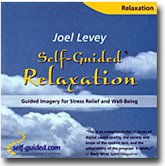Practicing Mindfulness:
The Cultivation of Understanding and Balance
Practicing mindfulness will allow you begin to see clearly what is really going on inside you. As you see more clearly, you find that you can just naturally come into balance. And as you do, you come to three very important realizations about how your mind works.
- The contents, qualities, and states of your mind are constantly moving and ceaselessly changing.
- Within or beneath this flowing movement of mind is a deep, quiet stillness that is completely undisturbed by all the movement.
- The movement and stillness are both present in your mind at every moment.
The Wheel of Mindfulness
The essence of practicing mindfulness is to be aware of what you are sensing, feeling, thinking, wanting, and intending to do at any given moment. Like any other life skill, mindfulness grows with practice. As you learn to understand how your perceptions, feelings, thoughts, desires, and intentions influence your body, your communications, and your behavior, you will feel more confident and better equipped to guide the course of your life and find balance moment to moment, day to day. The wheel of mindfulness illustrated below offers a simple yet powerful compass for charting the course of your life.

This navigation tool helps you to discover and to describe to yourself what is true for you in each moment in each dimension of your being. By knowing what is true for yourself in terms of what you are perceiving, thinking, feeling, wanting, and intending, you will be more likely to recognize options, make wiser decisions, and to honestly and accurately communicate your experience to others. For greater clarity in any situation, focus the beam of your mindfulness to illuminate each of the following five domains:
- I notice ... Practicing Mindfulness of Perception and Action
In this moment of experience what do you notice going on? What is the raw sensory data available to you directly through the doorways of your sense perceptions -- what do you see, hear, smell, touch, or taste? What you are looking to discover here is the kind of objective information that a video camera or tape recorder would pick up if they were turned on to record this experience, with no overlay of judgment or interpretation.
- I feel... Practicing Mindfulness of Emotions and Feelings
How does this experience make you feel? Do you feel anxious or at ease, happy or sad, mad or glad, depressed or excited? What words best describe the emotional tone of your experience in this moment? Be watchful of the tendency to respond by saying "I feel that. . ." Adding the word "that" after "I feel" probably indicates that you're moving into thinking and judging rather than staying with your actual emotional response.
- I think ... Practicing Mindfulness of Thinking, Thoughts, and Imagination
What are your thoughts or "internal conversations" about your experience? Are you creatively thinking about a situation, or are you merely replaying old thoughts? What is the story you're telling yourself about a situation -- your thoughts, fantasies, and assumptions? Recognizing the old stories helps you to live in a more grounded way and liberates you from mistaking your thoughts and assumptions for reality!
- I want... Practicing Mindfulness of Values, Intentions, and Desires
What are your values, intentions, and motivations? What do you really want or need? Having clarity on your values, desires, intentions, and motivations is essential for effective communication and action.
- I will... Practicing Moving Mindfulness into Action
What action are you willing to take in this situation? What are you unwilling to do? What are you willing to stop doing? Bringing mindfulness across the threshold of awareness into the domain of conscious action is the key to transformation. When you consider and then communicate to others what you are and are not willing to do, you become a conscious co-creator of your experience, rather than being unconsciously enslaved to it. And remember, your actions and inactions speak more loudly than your words. Be mindful of the impact that all your communications have on others.
[Adapted from the book "Living in Balance" by Joel Levey
and Michelle Levey]
